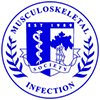Authors: Zalavras C, Allison DC, Holtom P, Patzakis MJ., University of Southern California, Los Angeles, CA
Title: Microbiology of Bone and Joint Infections in Injecting Drug Abusers
Purpose: Limited information exists for bone and joint infections in patients with injecting drug abuse (IDA). The purpose of this study was to determine the microbiology of bone and joint infections in this patient population.
Methods: This is a retrospective medical record review of patients admitted to the orthopedic infection ward of our institution from 1998 to 2005 with a history of IDA and concurrent bone and/or joint infection. We identified 215 patients (154 male, 61 female) with a mean age of 43 years. Osteomyelitis was present in 127 patients, septic arthritis in 53, and both conditions in 35 patients. The lower extremity was most commonly involved (141 cases, 66%) with osteomyelitis of the tibia present in 70 patients (33%) and septic knee arthritis in 30 patients (14%).
Results: Cultures yielded predominately Gram-positive bacteria, with Staphylococcus aureus present in the majority of cases (111/215, 52%), followed by coagulase-negative Staphylococcus (42/215, 20%). The proportion of oxacillin resistant Staphylococcus aureus (ORSA) increased from 6% in 2001 to 73% in 2005. Gram-negative rods were present in 19% (40/215) of infections, Pseudomonas in 7% (15/215) and anaerobes in 13% (27/215).
Discuassion and Conclusion: Bone and joint infections associated with IDA are predominately caused by Gram-positive bacteria, with an increase of ORSA. A considerable proportion of infections are caused by Gram-negative and anaerobic microorganisms. These findings suggest that broad-spectrum empiric antibiotic therapy, including vancomycin, may be necessary for bone and joint infections in patients with IDA.

